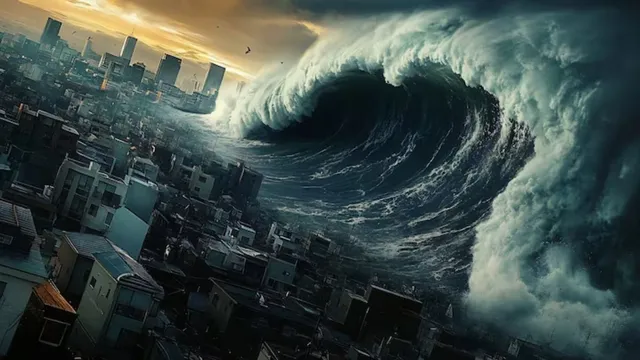- By Supratik Das
- Sun, 17 Aug 2025 10:07 AM (IST)
- Source:JND
Cascadia Mega-Tsunami Threat: Scientists have warned that if a strong earthquake ruptures the Cascadia Subduction Zone (CSZ), there might be a devastating mega-tsunami that will destroy the US Pacific Coast. The fault line, which stretches almost 600 miles from Northern California to Vancouver Island in Canada, is one of the most hazardous seismic hotspots in North America.
According to a recent study by Virginia Tech researchers published in the Proceedings of the National Academy of Sciences (PNAS), there is a 15 per cent chance that this fault line may experience an earthquake with a magnitude of 8.0 or higher over the next 50 years. Scientists cautioned that such an earthquake may result in roughly 1,000-foot-tall tsunami waves, posing a threat to Alaska and Hawaii and causing previously unheard-of destruction in Northern California, Washington, and Oregon.
Cascadia Subduction Zone: Silent But Lethal Fault Line
The Cascadia Subduction Zone is where the oceanic Juan de Fuca Plate is subducting beneath the North American Plate, building up tremendous tectonic pressure for many centuries. The most deadly earthquake here occurred in January 1700, forming a huge tsunami that was felt as far away as Japan. Since there hasn't been a major rupture in more than three centuries, seismologists warn that tension has been steadily increasing, which might cause one of the deadliest natural catastrophes in modern history. "Unlike slow-onset climate-based threats, this kind of disaster would play out in minutes with no time for adaptation or mitigation," the study said.
The research team, led by Virginia Tech Assistant Professor Tina Dura of the Department of Geosciences, used tens of thousands of computer models to estimate what could happen. They found that thousands of homes, communities, and essential infrastructures are vulnerable than was previously believed. According to the findings, a significant rupture may cause coastal land to sink up to 6.5 feet, rapidly enlarging floodplains and permanently altering shorelines. This sudden sinking would generate waves, perhaps hundreds of feet tall, to inundate land in minutes. "We have not yet quantified the growth of the coastal floodplain after a Cascadia Subduction Zone earthquake, and the effects on land use could easily double or triple the time it takes to recover," stated Dura.
Which Regions Have The Highest Risk?
According to the study, southern Washington, northern Oregon, and northern California are the most vulnerable regions to extreme flooding. Dense urban areas like Seattle and Portland can be underwater in a matter of minutes, putting millions at risk. Scientists caution that even though Alaska and Hawaii are farther from the fault line, they are still vulnerable because of their own seismic and volcanic characteristics and tsunami waves that can sweep across the Pacific.
Researchers have estimated that a complete rupture of the Cascadia fault would kill more than 30,000 people, level over 170,000 buildings, and cause economic losses of more than USD 81 billion. In addition to human life and property, essential infrastructure such as hospitals, energy systems, transportation routes, and water systems could be dramatically disrupted, keeping recovery efforts underway for decades.
Emergency Call for Preparedness
The Virginia Tech report emphatically urges immediate action to take precautions:
• Early-warning systems to provide residents with precious seconds to flee
• More robust building codes for coastal structures
• Citywide drills to educate residents in quick response
• Resilient urban design to factor in future floodplain growth
Even while the risk of earthquakes and tsunamis is natural and periodic, future sea level rise brought on by climate change could significantly increase the effects by leaps and bounds. Low-lying coastal cities can experience permanent flooding if the next large Cascadia quake happens at a time of higher ocean levels by the year 2100. With tens of millions of individuals now residing on the Pacific coast, another 1700 Cascadia earthquake and tsunami might be one of the most expensive catastrophes in US history.

